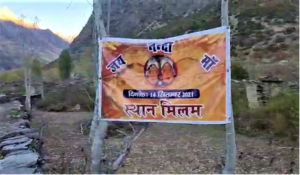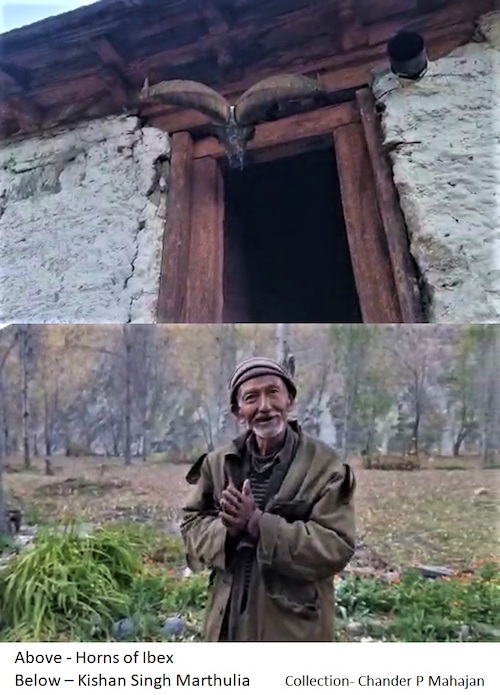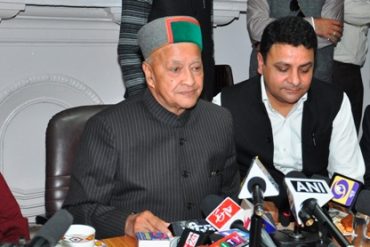I wonder if places of worship and foreheads of dwellings are adorned with symbols of strength like horns of ibex. Kishan Singh Marthulia of Mialm, somehow, advocates the belief with horns of ibex hung at the top of his dwelling. He serves people with delicacies.

- Despite the large horns of the animals, it’s rare for males to sustain serious damage from fights.
- The animal’s horns keep growing throughout their life. The ibex does not make a good pet as it does not have the usual traits of a domestic goat.
- The animals are quite large with large horns and are not particularly friendly. These animals can live up to 20 years in the wild.
- These animals typically socialize in gender-specific herds. This means that there are male herds and female herds.
- The male herds are often called bachelor herds. The legend goes that the two herds only meet up during breeding seasons.
- The breeding season for these animals starts in late autumn to early winter. The males leave their bachelor herds to find females.
- Situated 60 kms from a base camp at MinusiyariMilam is the largest glacier of Kumaon. It is one of the remotest yet accessible glaciers of Uttarakhand. The Glacier is the source of the Gori Ganga River which acts as an important tributary of the Kali River and is a major glacier of the Kumaon Himalaya, the largest in Uttarakhand.
- The Glacier is located at the base of Mount Trishuli (7065 mts) in the tehsil of Munsiyari, part of the Pithoragarh district of Uttarakhand, India, about 15 kilometres northeast of Nanda Devi. It ranges in elevation from about 5,500 metres (18,000 ft) to about 3,870 meters (12,700 ft) at its snout. It covers around 37 km2 and is 16 km long.
- The trekking for the Milam glacier commences from Munsiyari from where provision for food, porters, and guides can be done. The village of Milam lies near the snout of the glacier; Munsiyari, further down the Goriganga valley, is the base for the trek to the glacier; throughLilamSeolikoteBogudiyarRilkot and Martoli with optional diversions to Laspa and NandakotBurfuBugdiyar.
- The trek is long, tiring and adventurous and graded at a moderate level; going through mule bridges, granite rock faces, frozen ice streams and a final steep ascent to the villages for camping guarded by huge cliffs on both sides.
- The rugged terrain offers snow-laden Himalayan peaks that take one through the fascinating meadows, lush green valleys, waterfalls, picturesque streams, and isolated hamlets. Friendly people, varied flora and fauna and green landscapes extend the warmth and the comfort level of the moderate walks through pine forests, wooden bridges and chunks of ice. The trek goes through a mixture of forests and fields along the way.
- Milam glacier was reopened in the year 1994. It was closed in 1962, so it was inaccessible for trekkers and other visitors. It is a popular destination among trekkers now.
- The suitable time to visit the glacier is from mid of March to May. Monsoons set in during the month of June which forewarn of landslides and roadblocks.
- Starting in the morning, driving via Almora and Bageshwar from Kathgodamone can reach Munsiyari a popular hill station of the Kumaon region situated at an elevation of 2,290mts.
- Planning a few days itinerary through the ancient silk route of Tibet and the ruins of the old village of Rilkotone reaches Milam, the last on the route to Milam Glacier and is also one of the remotest villages of Uttarakhand state. It is situated at an elevation of 3,420mts above sea level. Going through ups and downs, exploring the beauty of the heavenly sites-grasslands, streams and waterfalls; the scenes are awesome.
- In ancient times, Milam village was the most populous village of district Pithoragarh but now its population is just nil. However, its importance is still maintained due to the world’s famous glacier -Milam.
………………………………………………………………………………………………………………………………………………
With inputs from Manu Maharaaj
Prof. (Er.) Chander P Mahajan is an art critic & a free lance journalist. The Environmentalist stays in Shimla and Dalhousie, Himachal Pradesh, India.







